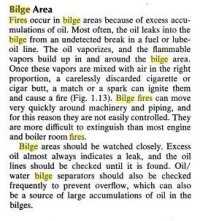Venting a diesel engine.
Jay, All good info so far so let me share with you what I have in place. I mounted my Wilcox Crittenden bilge vent fan to the underside of the port mushroom vent with no hose attached to it. My intent is to keep the engine room cooler than without a fan and given that heat rises, I saw no need for the hose. Not only does it do that but on a cold day or a night passage to Catalina Island, the exhaust works as an admirable hand warmer, no kidding. Plans are to install an identical one on the starboard side, I just haven't gotten around to putting it in, then I could easily keep both hands warm. If you wish, email me back channel at glynjudson@roadrunner.com for photos of the whole deal. Cheers, Glyn Judson, E31 hull #55, Marina del Rey CA
Jay, All good info so far so let me share with you what I have in place. I mounted my Wilcox Crittenden bilge vent fan to the underside of the port mushroom vent with no hose attached to it. My intent is to keep the engine room cooler than without a fan and given that heat rises, I saw no need for the hose. Not only does it do that but on a cold day or a night passage to Catalina Island, the exhaust works as an admirable hand warmer, no kidding. Plans are to install an identical one on the starboard side, I just haven't gotten around to putting it in, then I could easily keep both hands warm. If you wish, email me back channel at glynjudson@roadrunner.com for photos of the whole deal. Cheers, Glyn Judson, E31 hull #55, Marina del Rey CA

